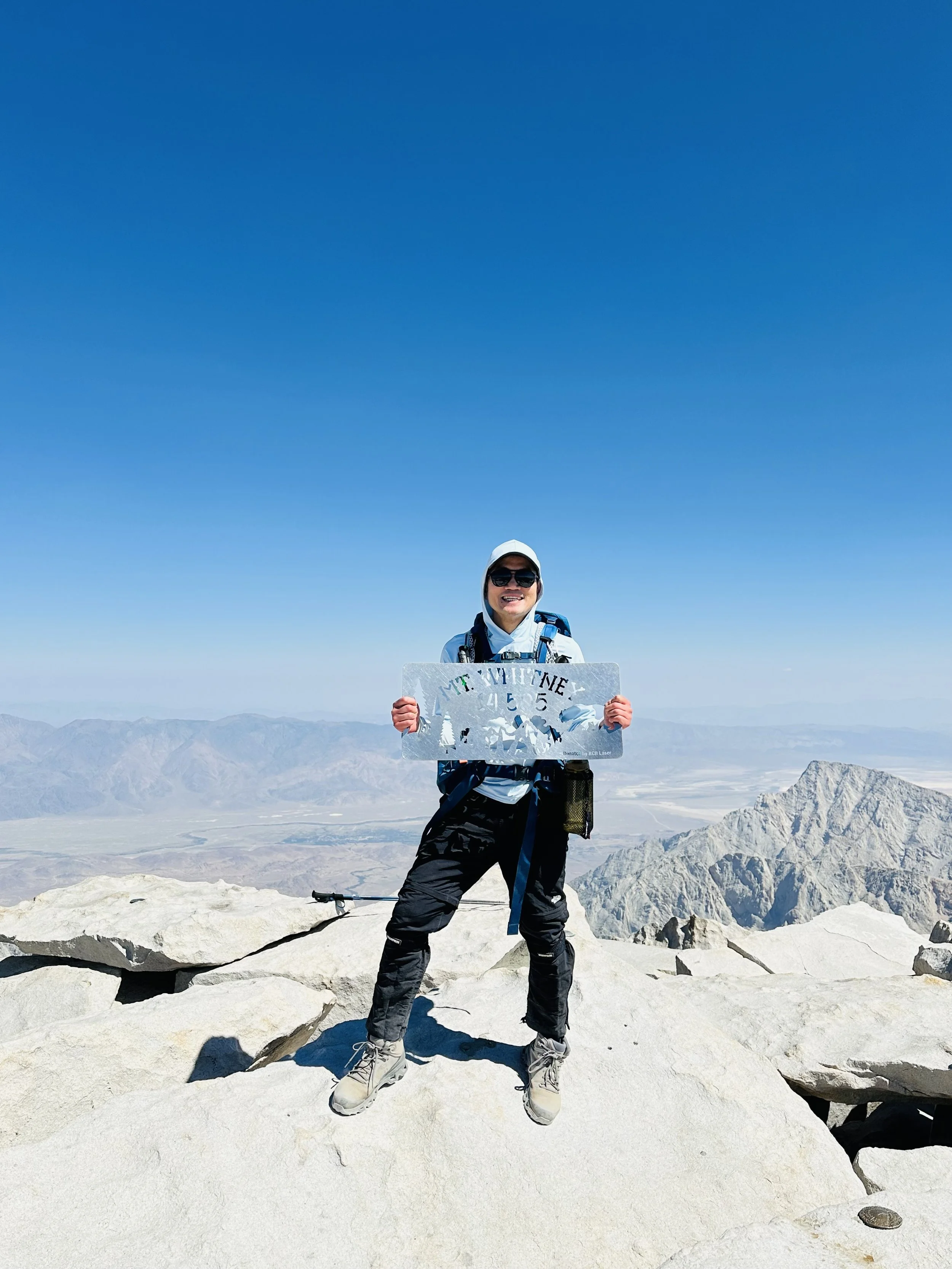A Gaysian’s Guide to the John Muir Trail
Standing at the summit of Mt. Whitney, the tallest mountain in the contiguous United States, on day 4 of the JMT.
Conditioning and Training
The John Muir Trail is over 230 miles of strenuous high-elevation hiking through the Sierra Nevada wilderness. This trail should only be attempted by hikers with high-elevation experience and who are in good physical condition. The constant ascending and descending of mountain passes - the shortest pass being over 10,000 feet, and the highest pass being over 13,000 feet - will push you to your physical limits. I am an avid hiker who can complete day hikes of 15-20 miles. However, I was only able to average about 10 miles per day on the JMT.
When I began my JMT journey, I had extensive hiking experience, having summited 17 mountains, including five 14ers. A few weeks prior to the JMT, I went on multiple day hikes to prepare my body for the major challenge that I knew I was in for. I hiked Mt. San Jacinto, Mt. San Gorgonio, White Mountain, Mt. Langley, and Mt. Gould.
If you are just starting out on your hiking journey, I recommend gaining more experience hiking at high-elevations before attempting the JMT. When I first started hiking mountains, I gained endurance and experience by hiking the SoCal Six Pack of Peaks. After completing these series of hikes, I gained more hiking experience by successfully summiting several 14ers including White Mountain, Mt. Whitney, Mt. Shasta, Split Mountain, and Mt. Langley. Even with all of this hiking experience, the JMT still pushed me to my physical limits. It was by far, the most challenging hike I have done to date.
To ensure that you are physically prepared for this journey, I recommend training by hiking up several mountains that are over 10,000 feet in elevation with at least 35 pounds of weight in your backpack. This will simulate what your daily experience will be on the JMT.
